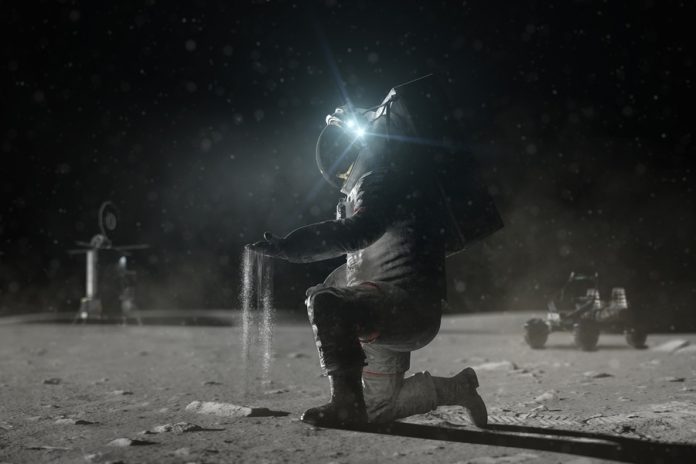
How do you get an atmosphere at a world that doesn’t have one and can’t keep one?
If it’s the Moon, you simply bombard it for millions of years with tiny meteorites.
Also, let it sit in the solar wind and see what happens. Both space-weathering processes create a thin “exosphere” just above the lunar surface.
Scientists call the first process “impact vaporization” and now suspect that it’s a major reason the lunar atmosphere exists. It also helps explain how atmospheric atoms escape from the Moon to space.
A team of scientists at MIT and the University of Chicago recently published a paper describing their research into the space weathering causes of the lunar exosphere. It pinpoints the process of impact vaporization as a major player.
“We give a definitive answer that meteorite impact vaporization is the dominant process that creates the lunar atmosphere,” says the study’s lead author, Nicole Nie, an assistant professor in MIT’s Department of Earth, Atmospheric and Planetary Sciences.
“The Moon is close to 4.5 billion years old, and through that time the surface has been continuously bombarded by meteorites.
We show that eventually, a thin atmosphere reaches a steady state because it’s being continuously replenished by small impacts all over the Moon.”
Tracking the space weathering influence on the moon’s atmosphere
Researchers have known about the lunar atmosphere for decades. It was first observed in the 1980s as a layer of atoms hugging close to the surface. The LADEE mission specifically studied that exosphere. The atoms don’t just lie there, however.
They bounce around, largely stirred up by constant impacts of tiny objects called micrometeoroids.
Those dust-sized particles—along with larger objects smacking into the surface—kick up the lunar soil. That vaporizes some of the atoms of material—including potassium and rubidium. Those atoms are suspended in the thin exosphere. Or, if they get enough velocity in the weak lunar gravity, they escape to space.
The MIT/Chicago team members wanted to prove the exosphere is produced by this impact vaporization component of space weathering. So, they analyzed samples of lunar soil collected during the Apollo missions.
They zeroed in on the potassium and rubidium content. That’s because those elements vaporize easily. If the Moon’s atmosphere is atoms suspended above the surface, lighter isotopes of those atoms should be more easily lofted. The heavier isotopes are more likely to settle back in the soil.
Furthermore, scientists predict that impact vaporization, and ion sputtering, should result in very different isotopic proportions in the soil.
The specific ratio of light to heavy isotopes that remain in the soil, for both elements they tested, eventually proved that impact-related vaporization is an important part of exosphere creation.
The solar wind’s effect on the moon
The solar wind also plays a role in creating the Moon’s exosphere. That occurs as the ionized particles in the solar wind ions interact with the surface and “sputter off” neutral atoms.
Not only does this process contribute to the creation of an exosphere, but it also affects the erosion of materials on the Moon.
The current MIT/Chicago study, however, pinpoints the constant rain of impacts as a significant contributor and the two processes work together to create the lunar exosphere.
“With impact vaporization, most of the atoms would stay in the lunar atmosphere, whereas with ion sputtering, a lot of atoms would be ejected into space,” Nie said.
“From our study, we now can quantify the role of both processes, to say that the relative contribution of impact vaporization versus ion sputtering is about 70:30 or larger.”
Space weathering and future missions
So, about 70 percent or more of the lunar exosphere is a product of meteorite impacts. The rest occurs thanks to the incessant influence of the solar wind.
While this space weathering activity doesn’t produce anything like a breathable atmosphere that future lunar explorers could breathe, it does give insight into the processes that affect the Moon.
Both meteoritic bombardments and solar wind activity pose continuing risks to lunar visitors and their infrastructure.
In addition to simply understanding the evolution of the lunar surface and atmosphere, such studies will be useful to anyone who seeks to build—and live—on the Moon in the future.
Written by Carolyn Collins Petersen/Universe Today.



